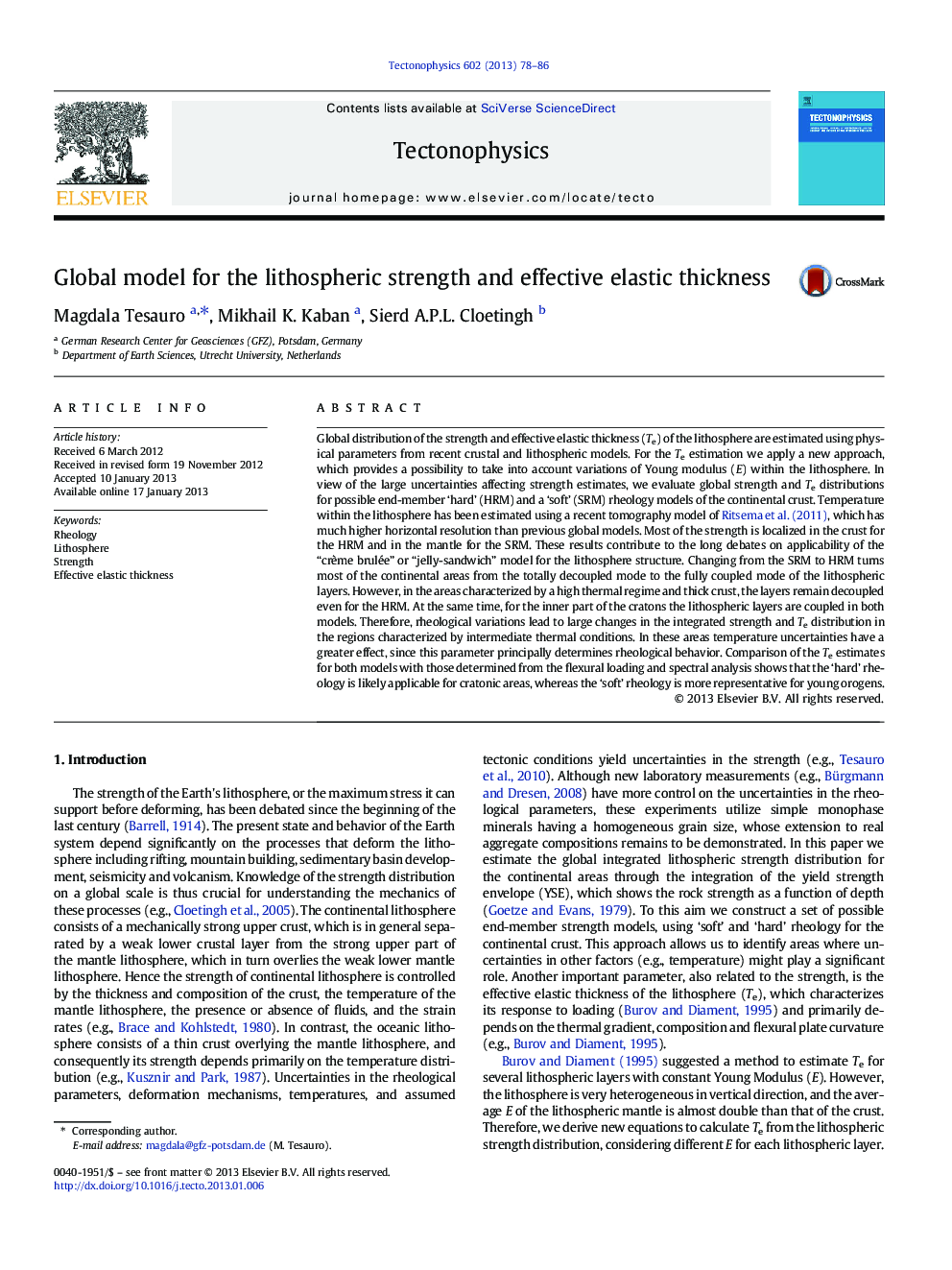| کد مقاله | کد نشریه | سال انتشار | مقاله انگلیسی | نسخه تمام متن |
|---|---|---|---|---|
| 4692245 | 1636785 | 2013 | 9 صفحه PDF | دانلود رایگان |
Global distribution of the strength and effective elastic thickness (Te) of the lithosphere are estimated using physical parameters from recent crustal and lithospheric models. For the Te estimation we apply a new approach, which provides a possibility to take into account variations of Young modulus (E) within the lithosphere. In view of the large uncertainties affecting strength estimates, we evaluate global strength and Te distributions for possible end-member ‘hard’ (HRM) and a ‘soft’ (SRM) rheology models of the continental crust. Temperature within the lithosphere has been estimated using a recent tomography model of Ritsema et al. (2011), which has much higher horizontal resolution than previous global models. Most of the strength is localized in the crust for the HRM and in the mantle for the SRM. These results contribute to the long debates on applicability of the “crème brulée” or “jelly-sandwich” model for the lithosphere structure. Changing from the SRM to HRM turns most of the continental areas from the totally decoupled mode to the fully coupled mode of the lithospheric layers. However, in the areas characterized by a high thermal regime and thick crust, the layers remain decoupled even for the HRM. At the same time, for the inner part of the cratons the lithospheric layers are coupled in both models. Therefore, rheological variations lead to large changes in the integrated strength and Te distribution in the regions characterized by intermediate thermal conditions. In these areas temperature uncertainties have a greater effect, since this parameter principally determines rheological behavior. Comparison of the Te estimates for both models with those determined from the flexural loading and spectral analysis shows that the ‘hard’ rheology is likely applicable for cratonic areas, whereas the ‘soft’ rheology is more representative for young orogens.
► We estimate global strength and Te using end-member rheologies.
► The Te estimates are compared with those obtained by other methods.
► Rheological variations produce large spatial changes in integrated strength and Te.
Journal: Tectonophysics - Volume 602, 16 August 2013, Pages 78–86
